13.08.2019 - Studies
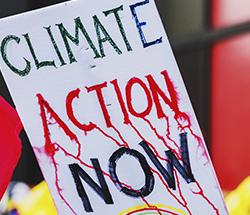
Environmental protection is at the top of the EU’s economic policy agenda.
Fueled by the increasing support for green movements and the Fridays for Future initiative, policymakers have plunged into climate actionism and set ever stricter climate goals. This can have unintended social and economic consequences.
The benchmark for climate protection policy within the EU is set by the international agreements of the UN Framework Convention on Climate Change and its additional protocols, the Kyoto Protocol and the Paris Convention. For the current commitment period of the Kyoto Protocol (2012 - 2020), the European Union has committed itself to reducing its greenhouse gas emissions by 20% by 2020 compared to 1990 levels.
The EU member states intend to meet this target together, although single countries contribute to the common goal with their own commitments. To comply with the agreements, Germany, for instance, has promised to reduce its emissions by 40% until 2020, by 55% until 2030, by 70% until 2040 and to become almost emission-neutral by 2050. The track record so far – a 25% reduction over the last 30 years and almost no change since 2009 – raises doubts about future progress (Fig. 1).1 Similarly ambitious are EU-wide goals (Fig. 2). Given the rising support for green movements across Europe, it is reasonable to expect that further steps will be taken to drastically tighten actual emissions.
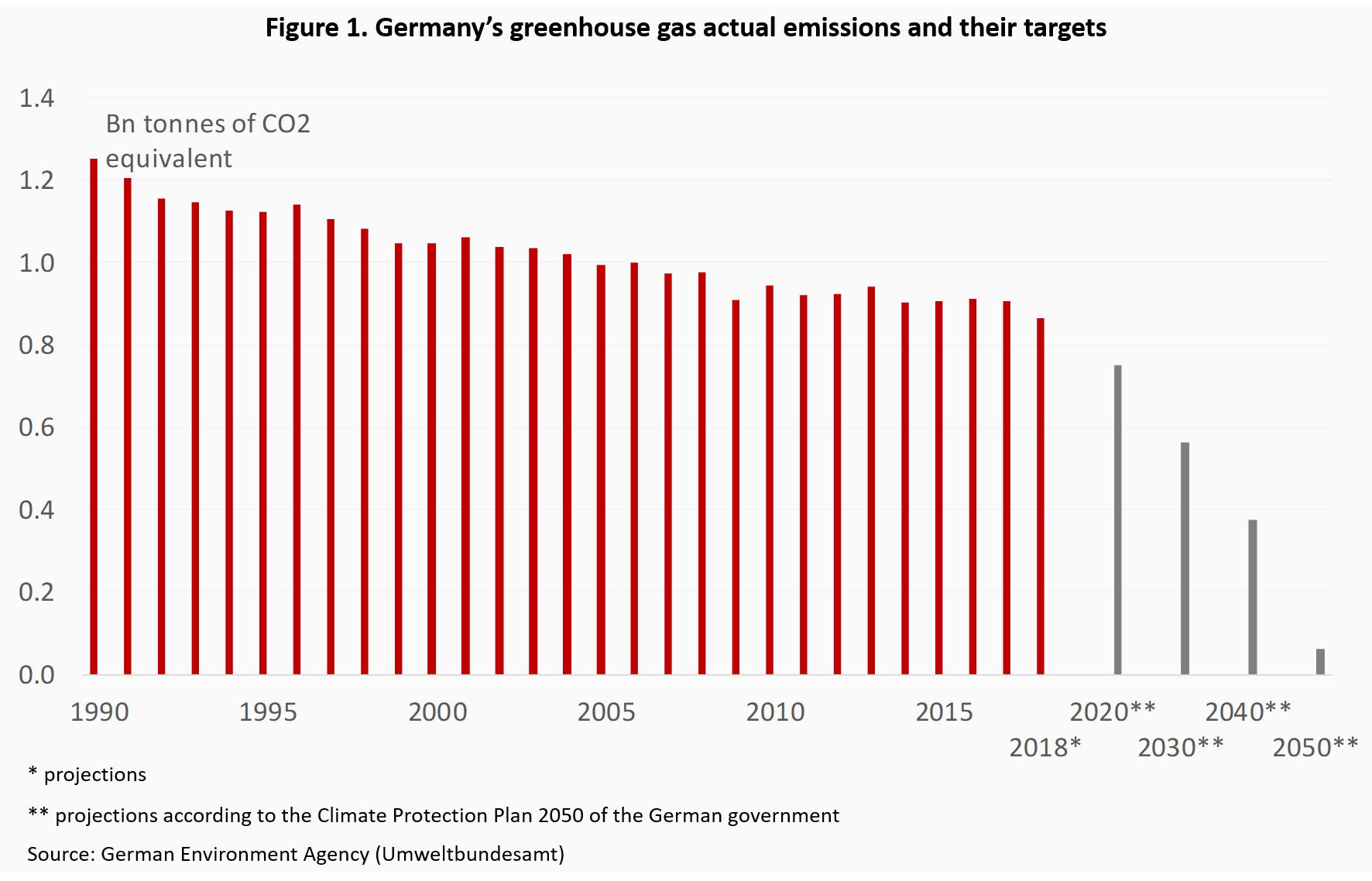
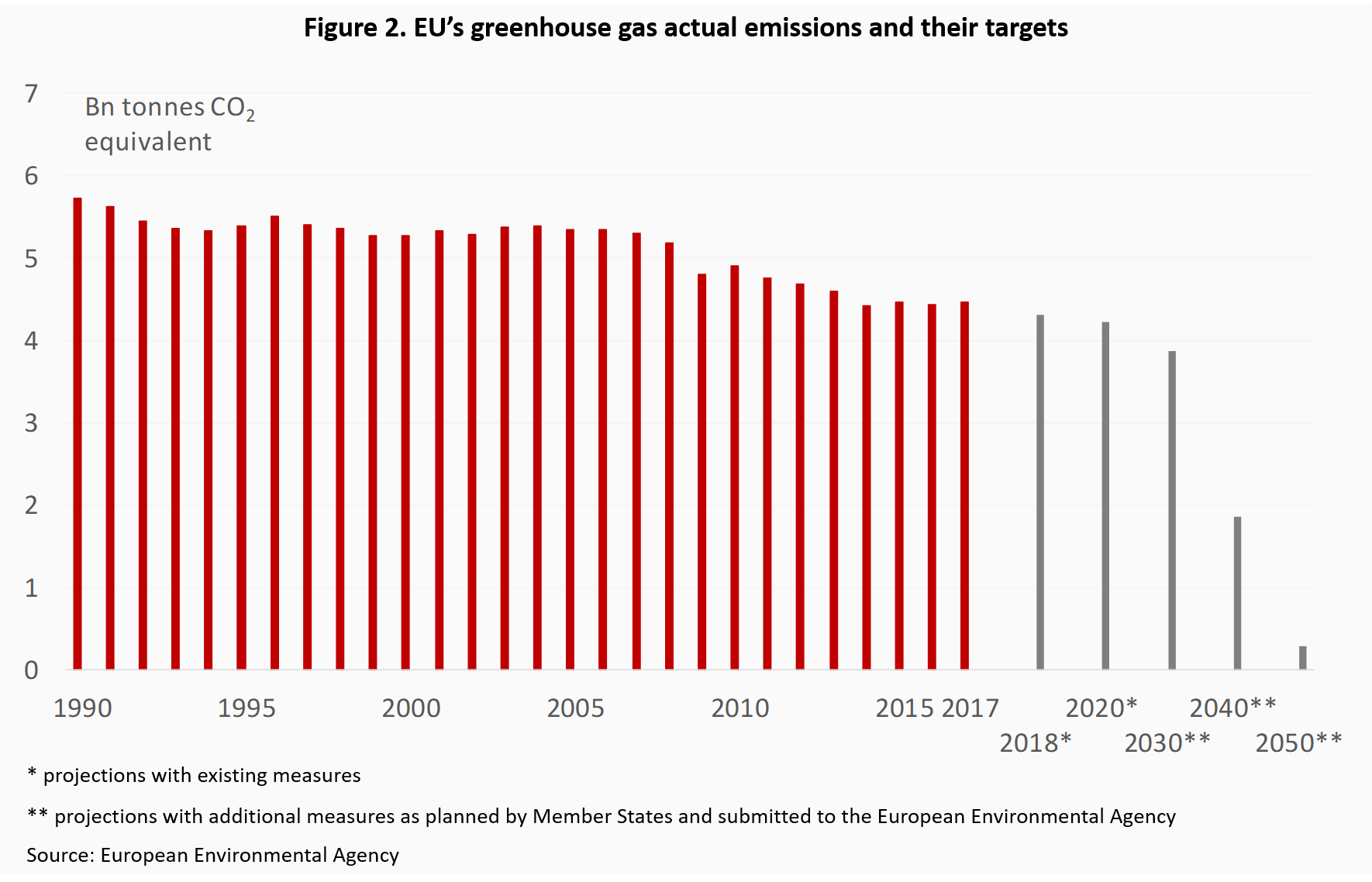
Although protecting the environment should be the integral part of responsibly managed business, it is equally important to understand the economic and social consequences of the structural change associated with it. Insisting on the achievement of ever stricter climate targets and pushing for green investment unduly for whatever it takes is against the stakeholder model, according to which any economic decision should balance interests and trade-offs of the parties involved. A politically, economically and socially balanced approach would need to reconcile both the benefits and the costs of environmental protection. However, the current political debate strongly focuses only on the former and neglects the latter.
Two kinds of effects on the real economy are likely. Environmental protection could – in the long run – spur green innovations and thus contribute to economic growth. At the same time, however, in the short- and medium-term “dirty” plants would have to be closed or at least adapted to new environmental standards. As this entails direct and non-negligible cost for companies, their profits would shrink, leaving less available resources for all kinds of investment, green and dirty alike. All this would have negative consequences for the stock of existing capital and employment. The negative effects would be amplified by capital outflows from the less profitable EU region towards countries such as the US, which are more reluctant to drastically increase environmental protection. Regarding the labor market consequences, after appropriate training, a part of the labor force could be shifted from dirty to clean production. However, due to labor market rigidities and substantial time-lags in implementing the appropriate policy measures, a large part of the labor force would be pushed out of the labor market.
There is a broad economic literature analyzing socio-economic aspects of climate policy, but the bulk of the research focuses on the US economy. Among recent contributions, Walker studies the impact on employment in companies and business sectors in response to county environmental regulations resulting from the 1990 Clean Air Act changes. He finds that the size of the regulated sectors fell by 15% in the 10 years following the changes.2 For the less investigated EU case, a simulation exercise by Böhringer, Löschel, Moslener and Rutherford shows that EU climate policy to reach 2020 targets (as defined in 2009) would cause initial market distortions and non-negligible compliance costs.3
This paper looks at the possible reallocation effects in the EU and its member countries by analyzing the sectoral CO2 emission patterns. The aim is to answer two key questions: 1) which EU countries may be the first in line to intensify their environmental policy effort in order to comply with the EU-wide targets, and 2) which industrial sectors are likely to be most affected by the reallocation of economic activity and employment.
Figure 3 shows that 12 EU member countries have a CO2 emission per employee from production above the EU-average.4 Half of them belong to new EU-members from Eastern and Southern Europe (Estonia, Czech Republic, Poland, Cyprus, Malta and Slovakia), the other half are old EU-members (Denmark, Finland, Belgium, Netherlands, Greece and Germany). Given the above-average emissions, these economies are likely to be most affected by the pursuit of climate policy goals.
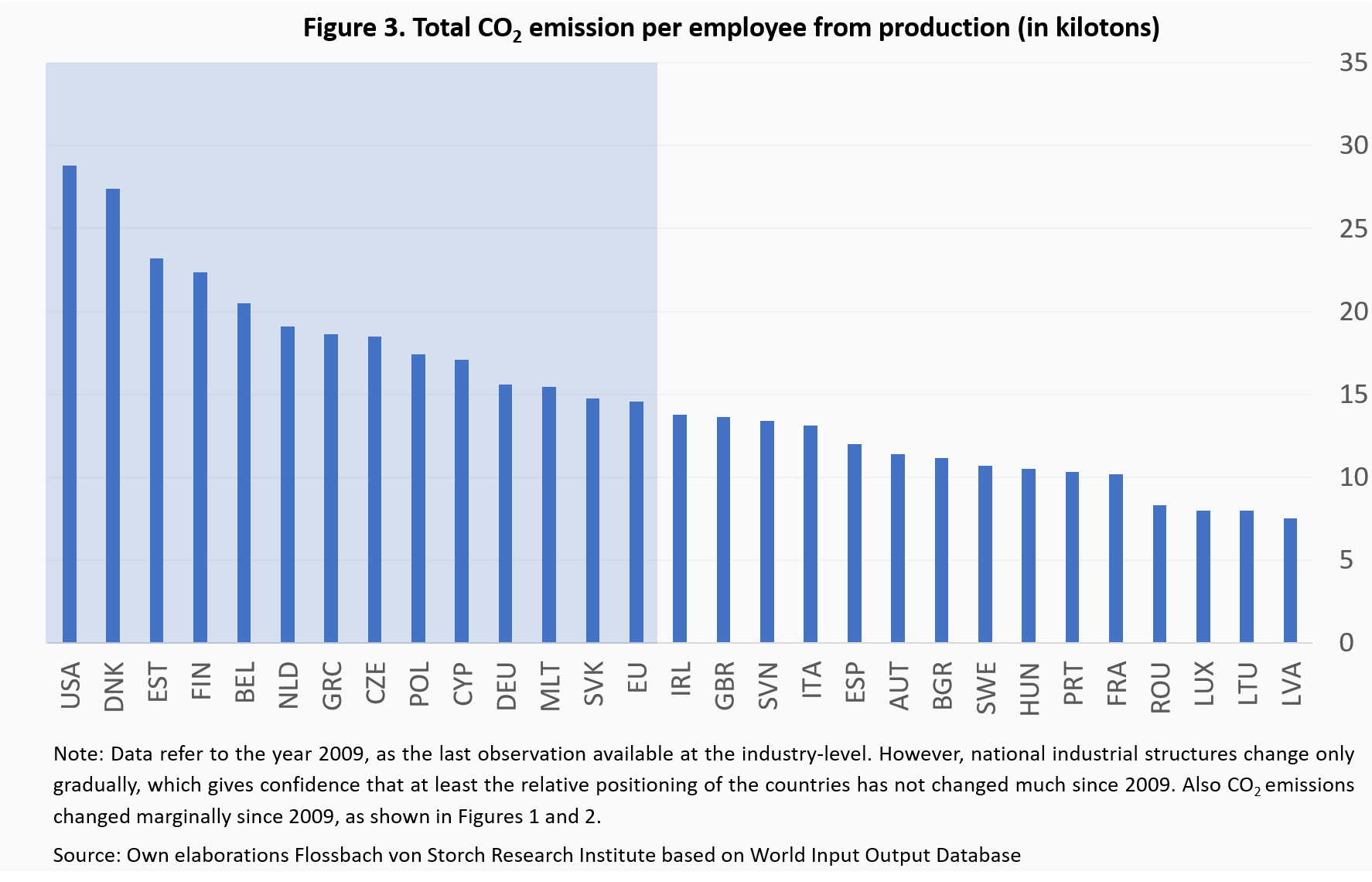
Looking at the sectoral CO2 emissions in each of the 12 identified EU members, Figure 4 shows the industrial sectors with the highest CO2 emissions, i.e., those in the last quartile of the sectoral distribution of the country-level emissions. This view allows a more detailed analysis of the possible targets for CO2 emission cuts and related reallocation effects taking place in each single country.
The sector with the highest CO2 emissions is electricity, gas and water supply, which is responsible for 25% to 70% of total country-level CO2 emissions. A large part of these emissions is attributable to intermediate consumption by other industrial sectors. Regarding the other CO2 polluters, the three sectors of water, inland and air transportation are responsible for a large proportion of emissions in all the analyzed countries. The incidence of the remaining CO2-emitting sectors reflects the industrial specialization pattern of each single country.
What part of economic activity could be affected by reallocation effects due to climate policy? To assess this, Table 1 shows the cumulative value added and employment shares of the sectors reported in Figure 4. The overall impact of about 15% - 30% both in terms of value added and employment is significant. The most affected are the less developed, relatively small and thus more specialized countries from Southern and Eastern Europe (Malta, Slovakia, Czech Republic, Poland and Estonia). However, also among the more developed EU members – with Germany at the forefront – the impact could be economically relevant. In the case of Germany, the two sectors with the second and the fifth most intensive CO2 emissions, namely basic metals and fabricated metal products and chemicals and chemical products, are responsible for 2.8% and 2% of overall value added production and employ 2.9% and 1% of German workers.
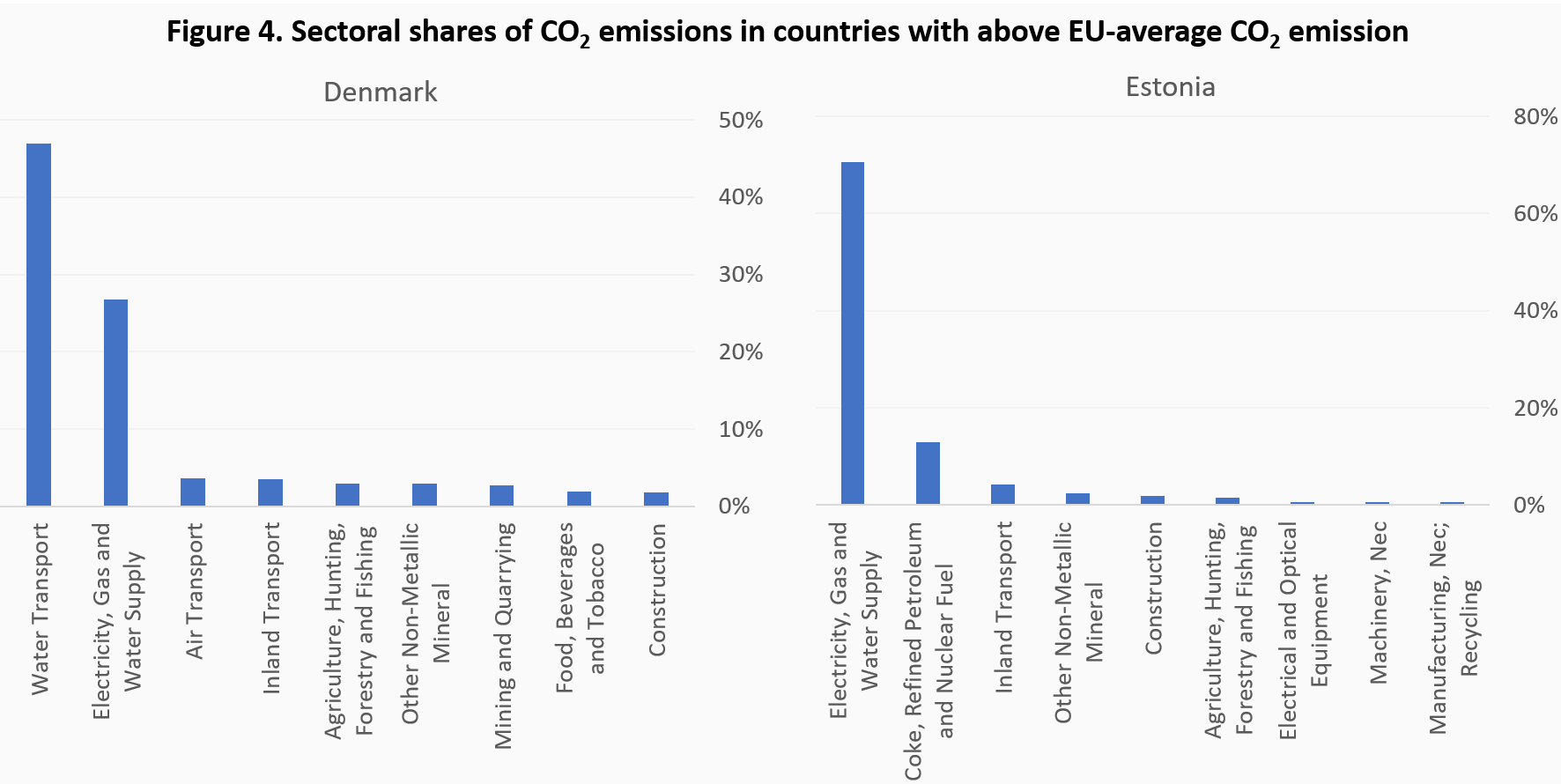
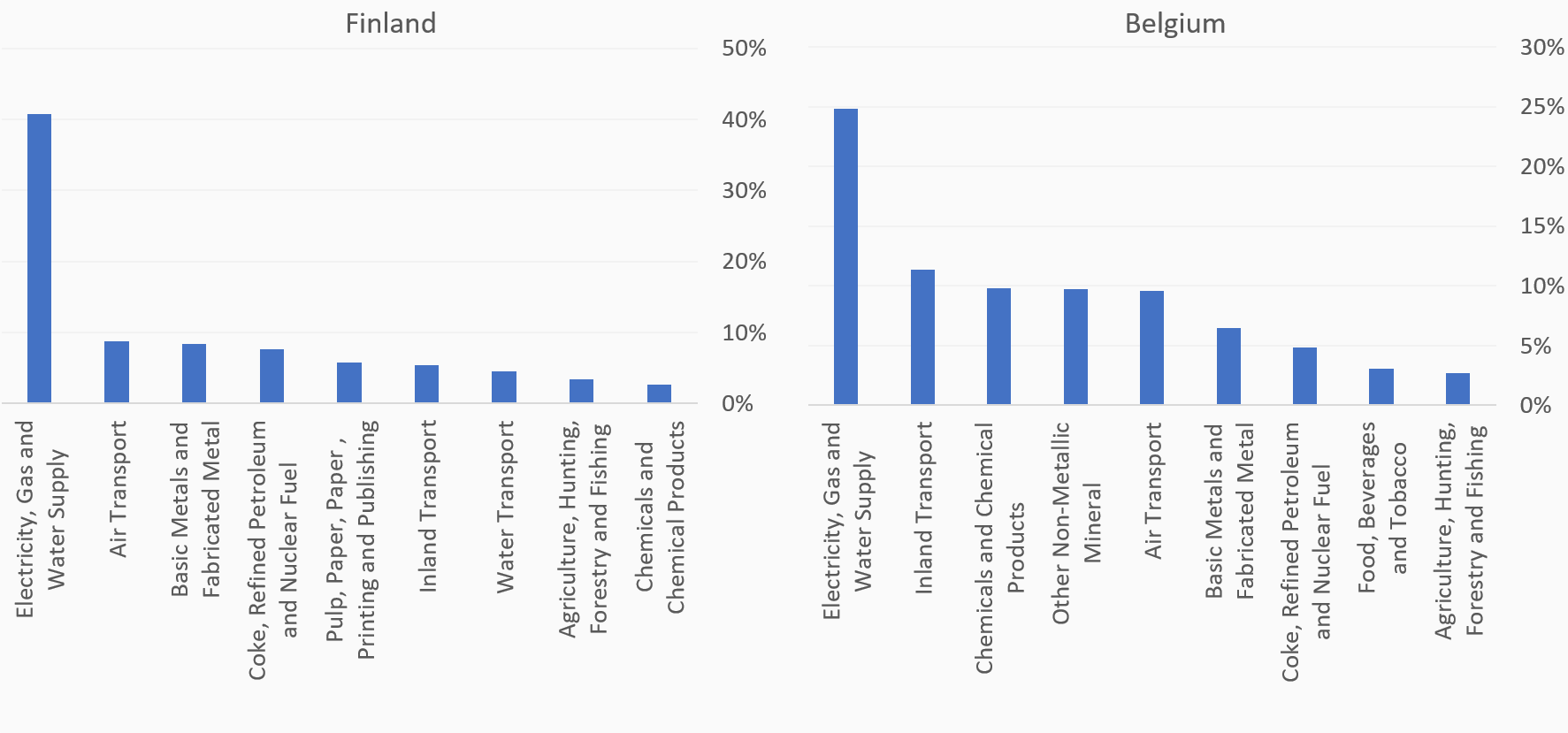
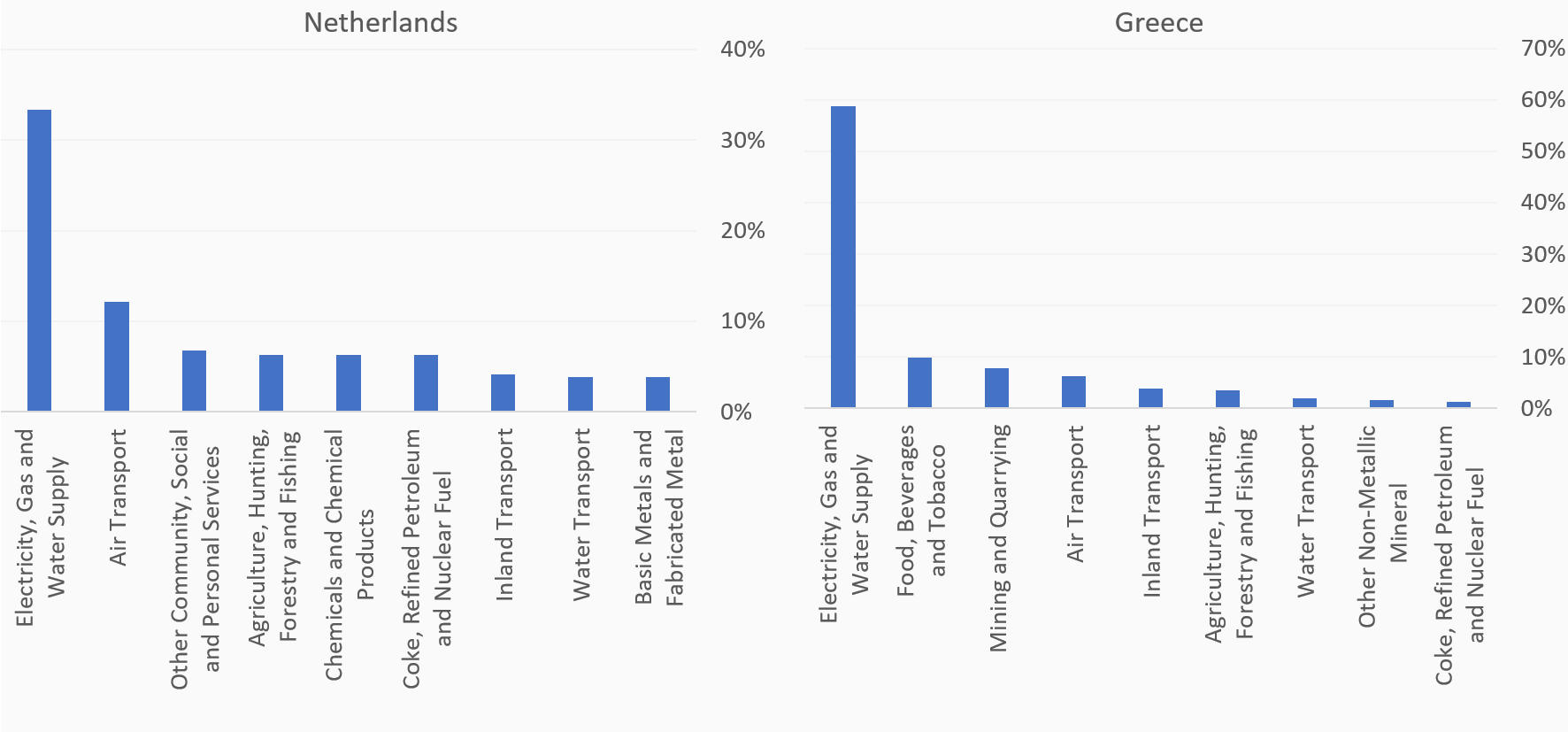
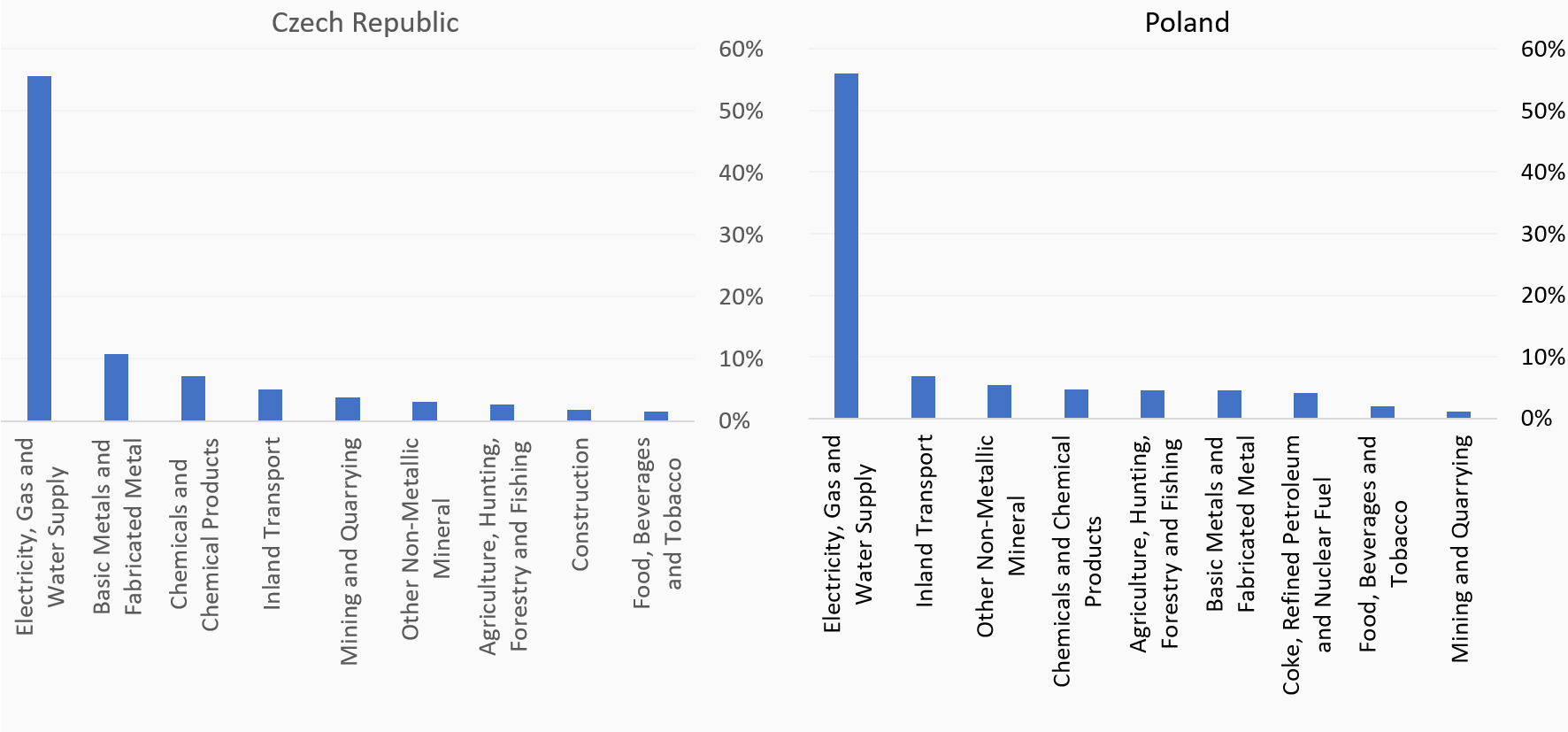
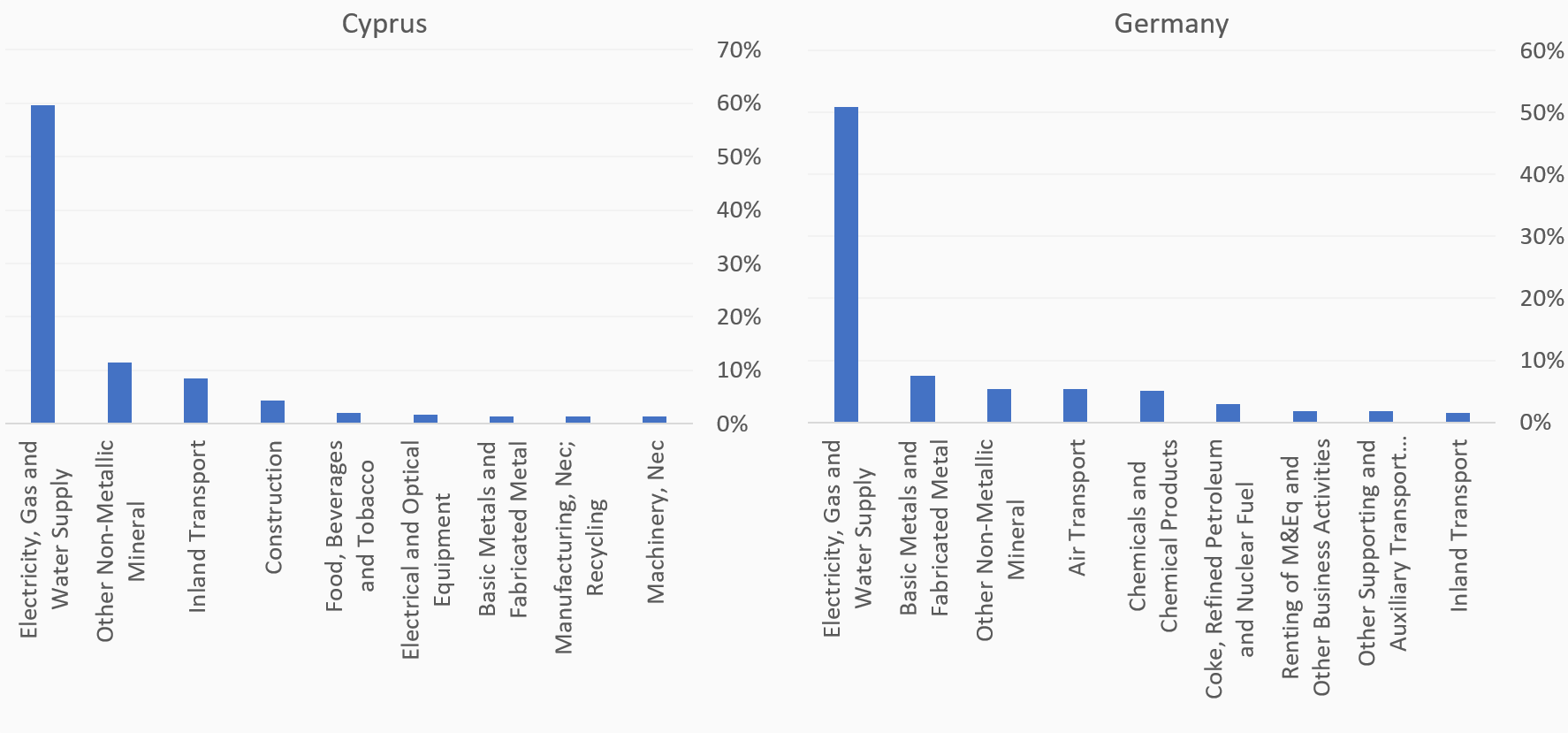
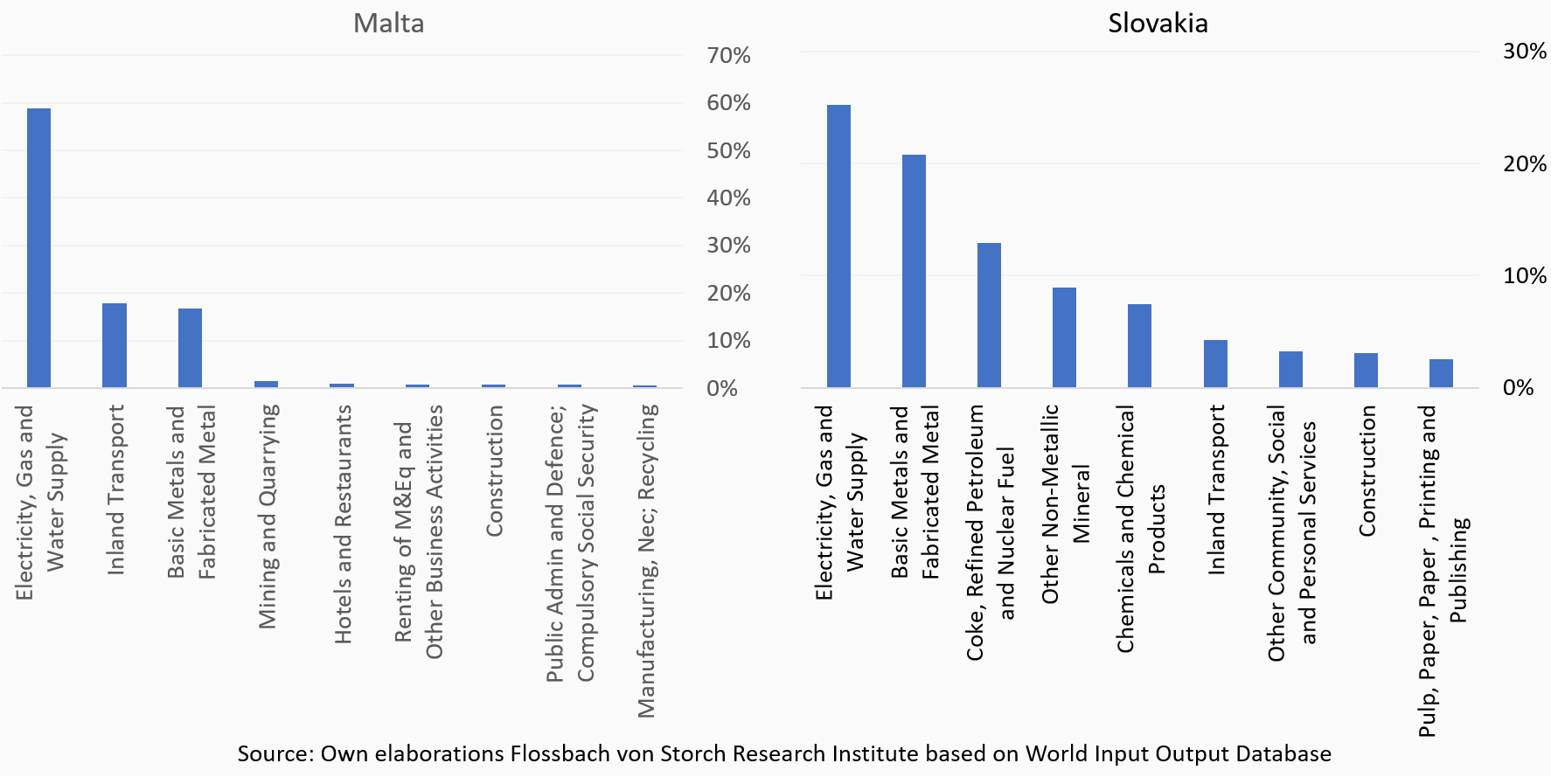
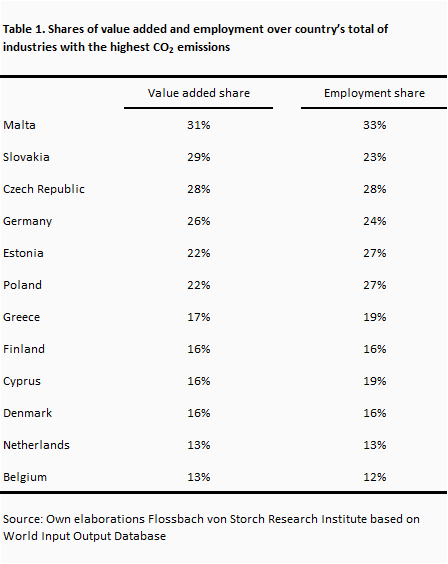
Cuts and eventual elimination of CO2 emissions will have substantial effects on sectoral value added and employment as well as on the overall economy. A sizeable part of previously employed capital and labor will become redundant. New capital will need to be built and labor will need to be reallocated. This will lower the scope for consumption. Not all employees will be able to adjust, and hence drop out of the labor force. More social spending will be needed. Some countries within the EU will be more affected than others. New technology and investment will eventually boost economic growth. But it will take time, until the positive effects of the green restructuring exceed the negative ones.
Politicians are shying away from telling their electorates the full truth. To appease climate activists, they adopt ambitious climate goals and dismiss the near-term costs associated with achieving these goals. With this they risk a political backlash that could destroy their entire climate policy.
1 Since the failure to reach the subsequent goals is foreseeable, Germany has already taken further steps to reduce its emissions. Based on a newest EU regulation 2019/632, car manufacturers must reduce the average emissions of new cars by 37.5% by 2030 compared to 2021.
2 Walker, W. Reed (2011), Environmental Regulation and Labor Reallocation: Evidence from the Clean Air Act, American Economic Review, 101(3): 442-447.
3 Böhringer, Christoph, Andreas Löschel, Ulf Moslener and Thomas F. Rutherford (2009), EU climate policy up to 2020: An economic impact assessment, Energy Economics, 31(2): S295-S305.
4 International comparisons are typically based on total CO2 emissions (from consumption and production) per capita (not per employee). From the investor’s point of view more relevant is the assessment of production-related CO2 emissions per capita or per employee.
16.08.2018 - Society & Finance
Legal notice
The information contained and opinions expressed in this document reflect the views of the author at the time of publication and are subject to change without prior notice. Forward-looking statements reflect the judgement and future expectations of the author. The opinions and expectations found in this document may differ from estimations found in other documents of Flossbach von Storch AG. The above information is provided for informational purposes only and without any obligation, whether contractual or otherwise. This document does not constitute an offer to sell, purchase or subscribe to securities or other assets. The information and estimates contained herein do not constitute investment advice or any other form of recommendation. All information has been compiled with care. However, no guarantee is given as to the accuracy and completeness of information and no liability is accepted. Past performance is not a reliable indicator of future performance. All authorial rights and other rights, titles and claims (including copyrights, brands, patents, intellectual property rights and other rights) to, for and from all the information in this publication are subject, without restriction, to the applicable provisions and property rights of the registered owners. You do not acquire any rights to the contents. Copyright for contents created and published by Flossbach von Storch AG remains solely with Flossbach von Storch AG. Such content may not be reproduced or used in full or in part without the written approval of Flossbach von Storch AG.
Reprinting or making the content publicly available – in particular by including it in third-party websites – together with reproduction on data storage devices of any kind requires the prior written consent of Flossbach von Storch AG.
© 2024 Flossbach von Storch. All rights reserved.
